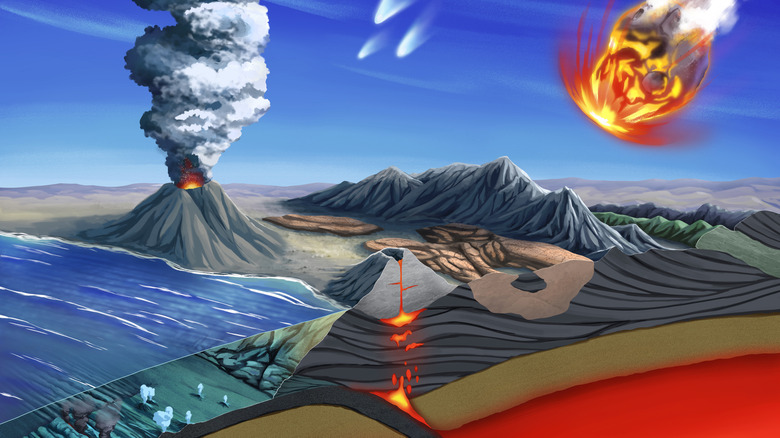How Astronomers Plan To Search For Life Beyond Our Planet
How do you search for extraterrestrial life? It's no easy task, peering at planets trillions of miles away to find clues about whether there could be life as simple as microbes there. But with new tools like the James Webb Space Telescope, we'll be able to look farther and more accurately than ever before. Now, a new study has proposed looking for methane in the atmospheres of exoplanets.
One key way that astronomers search for evidence of life elsewhere is to look for biosignatures — chemical substances that indicate that life could be present. For example, oxygen is a biosignature because on Earth it is produced by plants photosynthesizing sunlight (via Astrobiology). However, researchers have questioned whether oxygen is really useful as a biosignature because it could be produced by non-biological sources like atmospheric processes on other planets (via SETI).
In any case, oxygen isn't the ideal chemical to look for with a tool like the James Webb Space Telescope, according to Maggie Thompson, a graduate student in astronomy and astrophysics at UC Santa Cruz and lead author of the new study, because it will be hard to detect.
Instead, Thompon's paper assesses whether tools like Webb could be used to look for methane, a gas that does appear in Earth's atmosphere in small quantities. It is a potentially useful chemical to search for as evidence of life because it is naturally destroyed by petrochemical processes in the atmosphere — so it needs to be continually replenished to appear abundant.
Other ways to make methane
Methane is produced by living creatures –- on Earth, more than a third of emissions of methane comes from cattle and other livestock (via Science Daily).
"If you detect a lot of methane on a rocky planet, you typically need a massive source to explain that," explained coauthor Joshua Krissansen-Totton, a Sagan Fellow at UCSC. "We know biological activity creates large amounts of methane on Earth, and probably did on the early Earth as well because making methane is a fairly easy thing to do metabolically."
However, the gas can be produced by non-biological processes like volcanoes or hydrothermal vents, too.
So it isn't a simple case where if you see methane on another planet, there must be life there. The new research tries to quantify what kind of other observations are needed for a given methane detection to indicate life.
For example, if methane comes from volcanoes, you would expect to see carbon monoxide being pumped into the atmosphere as well. But if you see high levels of methane along with carbon dioxide but little or no carbon monoxide, that is a stronger indication of life. Taken in context, finding methane along with certain other chemicals being present or absent could be indicators of life.
"Methane is one piece of the puzzle, but to determine if there is life on a planet you have to consider its geochemistry, how it's interacting with its star, and the many processes that can affect a planet's atmosphere on geologic timescales," Thompson said.
